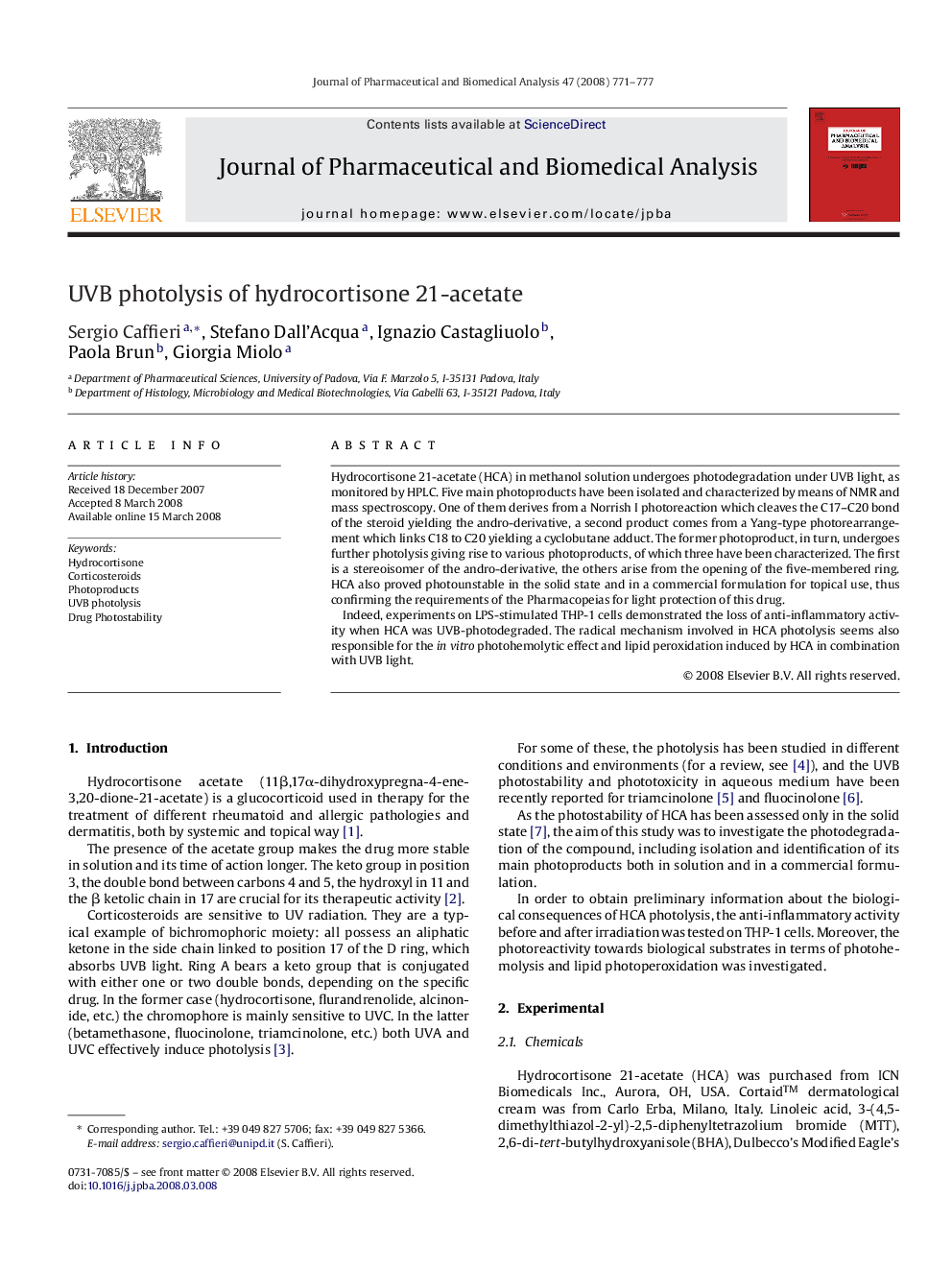| Article ID | Journal | Published Year | Pages | File Type |
|---|---|---|---|---|
| 1222983 | Journal of Pharmaceutical and Biomedical Analysis | 2008 | 7 Pages |
Hydrocortisone 21-acetate (HCA) in methanol solution undergoes photodegradation under UVB light, as monitored by HPLC. Five main photoproducts have been isolated and characterized by means of NMR and mass spectroscopy. One of them derives from a Norrish I photoreaction which cleaves the C17–C20 bond of the steroid yielding the andro-derivative, a second product comes from a Yang-type photorearrangement which links C18 to C20 yielding a cyclobutane adduct. The former photoproduct, in turn, undergoes further photolysis giving rise to various photoproducts, of which three have been characterized. The first is a stereoisomer of the andro-derivative, the others arise from the opening of the five-membered ring. HCA also proved photounstable in the solid state and in a commercial formulation for topical use, thus confirming the requirements of the Pharmacopeias for light protection of this drug.Indeed, experiments on LPS-stimulated THP-1 cells demonstrated the loss of anti-inflammatory activity when HCA was UVB-photodegraded. The radical mechanism involved in HCA photolysis seems also responsible for the in vitro photohemolytic effect and lipid peroxidation induced by HCA in combination with UVB light.
